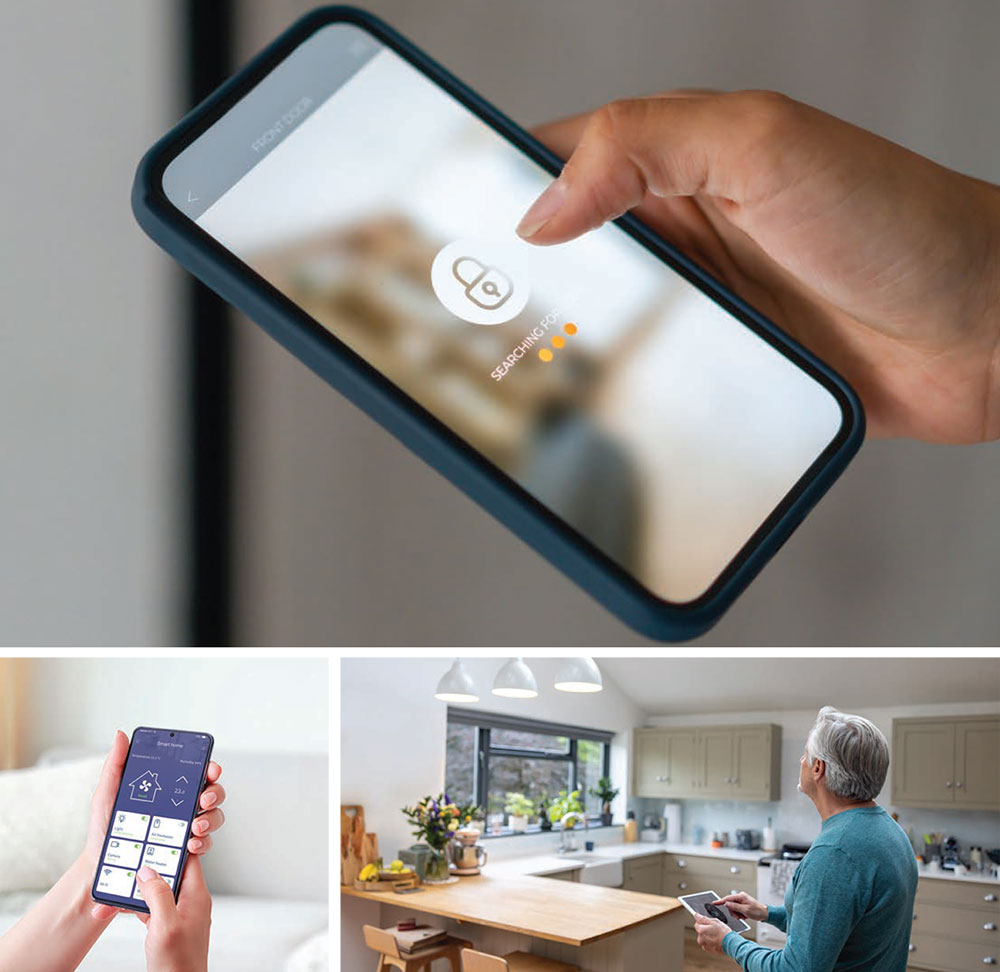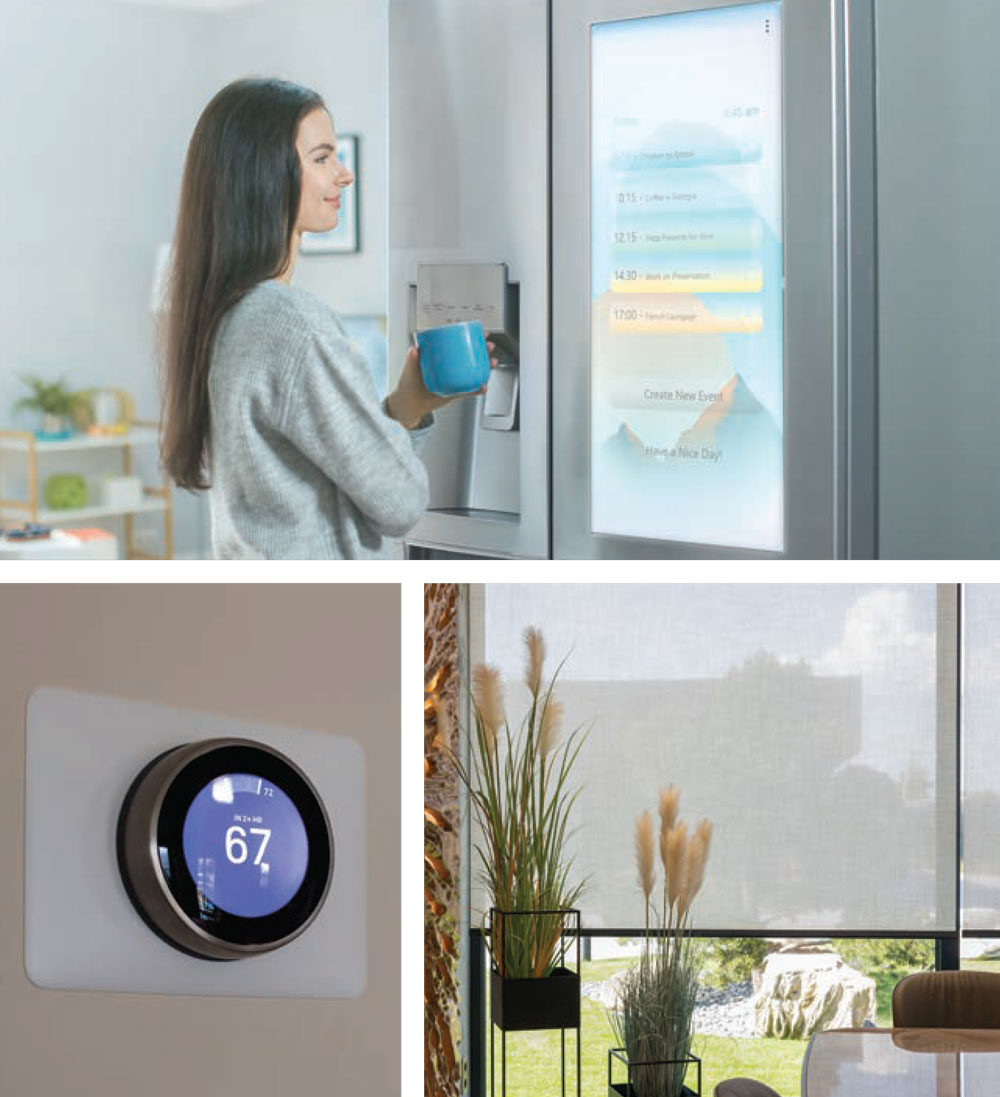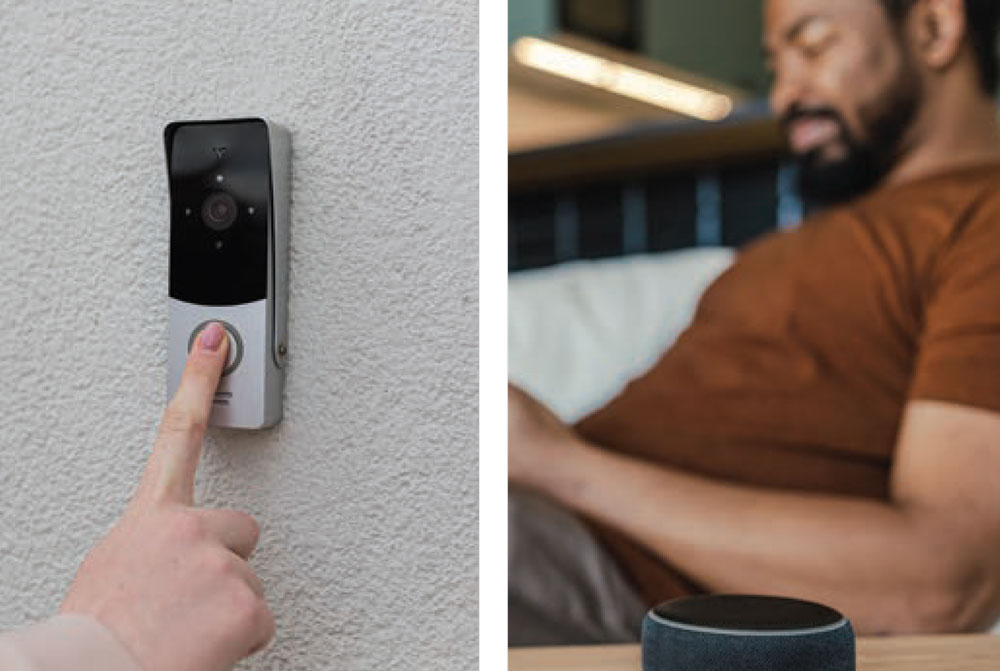OPENING THE DOOR
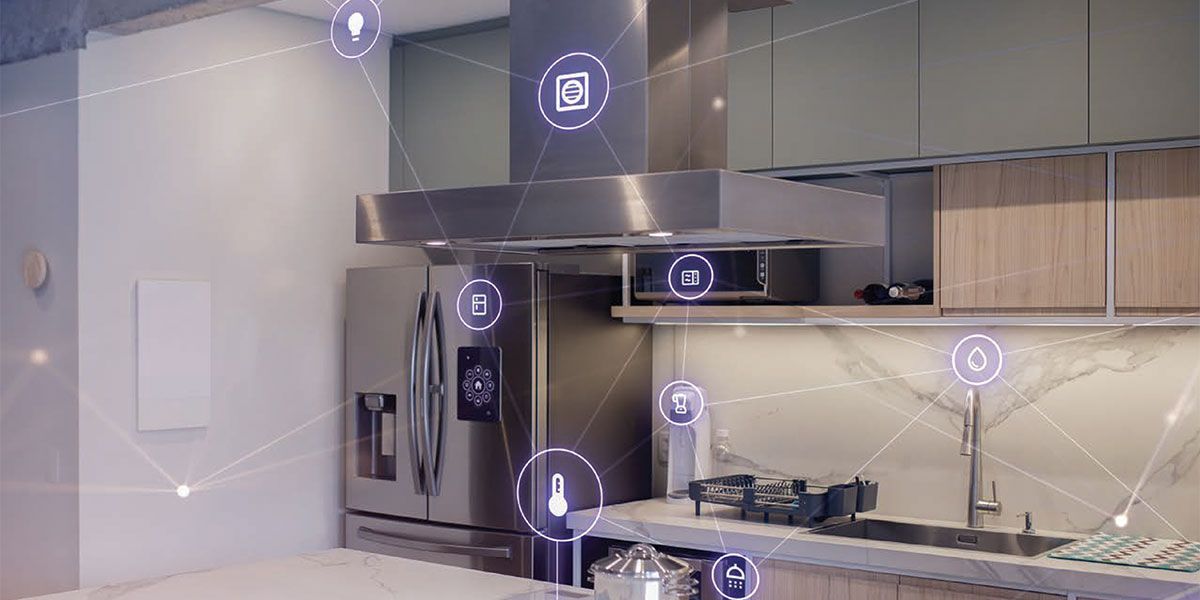
Smart Technology in the Home Is What You Make of It
What if you could keep watching the football game and turn off the oven at the same time? Or switch on all your holiday lights, indoors and out, with a single press of a button? Or open the door for weekend guests who have arrived while you’re still running last-minute errands? Here’s the good news: You can! Thanks to the internet and advances in technology, if you have a smartphone, you can live in a home filled with “smart” possibilities that can make your life easier and more enjoyable. But before you jump in, here are some realities to consider.
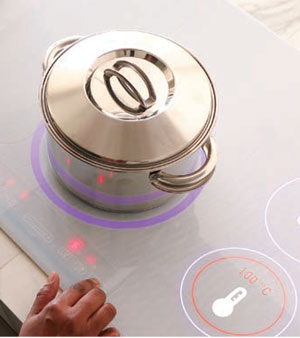 An array of options
An array of options
The kitchen is the heart of the home, where hours are spent preparing and serving family meals. Many newer kitchen appliances – wall ovens, ranges, refrigerators, dishwashers, microwaves and ice makers – have built in Wi-Fi capabilities.
“You just use an app downloaded to your phone,” says Carl Ramsberger, president and CEO of Appliance Studio in Roanoke. “You register the appliance and then can coordinate everything through your phone. And you can get alerts [when something is amiss].”
Delayed start time has been an available feature on ovens for years. Now, you can turn on your electric oven when you’re heading home from work or errands. (Remote start isn’t available on gas ovens.)
“People love the idea that the oven can be preheated [remotely], but you have to set that up before you leave in the morning,” Ramsberger says.
If you’re home, however, you can take full advantage of “smart” options. With a Wi-Fi-connected oven or grill, from your couch you can change the temperature or let a probe tell you if a dish is fully cooked. A smart refrigerator sends alerts when the door is open; some Sub-Zero models even offer a night mode that automatically dims the interior light when the door is opened to a darkened room. Certain dishwashers can be connected to an Amazon account, which prompts automatic ordering and delivery of detergent and rinse aids.
Beyond the kitchen
Smart technology can control much more than kitchen appliances. Smart thermostats allow you to turn on the air conditioning in a vacation home as you drive there or verify you’ve turned it off after you’ve left. They can also let you override a guest’s setting, which may not be the number you wish.
Window drapes and shades can be controlled remotely, too, so normal household routines can be mimicked even when the house is empty. The same goes for lighting: smart plugs don’t require any changes to the home’s electrical system, because they go into existing outlets, but they do require dimmable light fixtures. Outside lighting can be set to turn on automatically or on demand.
“You can turn [lighting] on before you get home, so you can see when you get home,” says Darrell White, project manager for Building Specialists in Roanoke. “It gives you flexibility over a schedule.”
When it comes to home security, we’re far past basic doorbell cameras. Sophisticated systems have clear images, wide views and even allow verbal communication, so you can provide instruction – or a warning. Deadbolt locks can also be accessed via Wi-Fi. “If you need to let somebody in, you don’t have to give them a code,” White notes.
Maintenance and security
Whether you care about smart technology or not, it’s here. “Gone are the days of the appliance guy in the truck with a box of tools,” Ramsberger says. “Even if you have knobs [on an appliance], there’s a control board behind it. If [your service technician] doesn’t have a computer that works on that particular manufacturer’s products, you’re out of luck.”
One upside of advanced devices is that a repair can begin even before the homeowner knows one is needed. “[The customer’s] refrigerator will email me, I can go in remotely to diagnose [the problem] or get a good idea,” Ramsberger says. “Then I call the customer to let them know they need a new part or a visit. That’s handy.”
But humans are still necessary. Ramsberger says fault codes, which are supposed to identify the problem for a technician, are more often wrong than correct. “You’re relying on something that’s broken to tell you what’s broken,” he notes.
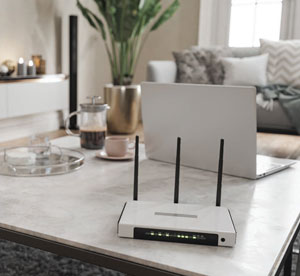 And if you want to use remote access, an encrypted Wi-Fi system – or personal server – is essential. Criminals who access home systems can unlock doors, open garages and even discern whether people are home. “If a refrigerator hasn’t been opened or closed for a few days, they assume nobody’s home,” Ramsberger says.
And if you want to use remote access, an encrypted Wi-Fi system – or personal server – is essential. Criminals who access home systems can unlock doors, open garages and even discern whether people are home. “If a refrigerator hasn’t been opened or closed for a few days, they assume nobody’s home,” Ramsberger says.
White says most customers are interested in some amount of technology, as options have become more affordable and reliable. “From lighting to appliances, everyone is starting to embrace it,” he says. “The best advice is to consult with a manufacturer’s representative who can help you design your system. Customers will need service down the line, and these are the guys who’ll be servicing it.”
Putting it all together
Richard Shively, who founded Shively Electric in 1974, encourages homeowners to think carefully about what they want, need and will use. When Shively built his home in 2007 (he’s an engineer as well as an electrician), he installed systems to manage HVAC, lighting and security, including cameras. While all are useful, he’s most enthusiastic about the systems that lead to savings.
 “I am 110% sold on [remote HVAC control], because it saves money,” he says, noting that adjusting temperature from afar is useful, especially for a vacation home or while traveling away from the primary residence. Wall sensors can turn lights off in a room once people move elsewhere. Depending on the lighting system, it’s also possible to create a setting, for movie-watching or entertaining, which will dim lights in one area but not another. “This is smart home tech that’s practical,” he says. “Every time you dim a light, you save electricity.”
“I am 110% sold on [remote HVAC control], because it saves money,” he says, noting that adjusting temperature from afar is useful, especially for a vacation home or while traveling away from the primary residence. Wall sensors can turn lights off in a room once people move elsewhere. Depending on the lighting system, it’s also possible to create a setting, for movie-watching or entertaining, which will dim lights in one area but not another. “This is smart home tech that’s practical,” he says. “Every time you dim a light, you save electricity.”
Bringing smart features into a home isn’t hard, but Shively advises a thoughtful approach. “It’s an after-market application, and you don’t have to run [new] wires,” Shively says. “But stay with manufacturers that have been around for a long time. When you need parts, you want that company to still be around.”
Shively’s best advice: “We’ve seen so many trends over the years. I’m all in [with technology] as long as it has a practical usage. You want functionality, not gadgetry.” ✦
Ceiling Fan, door locks, internet, monitored home security systems, rear security camera, shades, smart refrigerator, smart technology, smartphone, smoke alarms, thermostat, video doorbell, Wi-Fi capabilities, window drapes
